The History Of

HISTORY OF CORRIGANVILLE
From the Chumash Indians to the movies of the 1940’s – 1960’s, Corriganville is rich in history.
Ray “Crash” Corrigan entered films in 1932 as a stuntman and bit player. In 1936 he began to star in serials and action pictures. After his retirement in the 1940’s, and a series of Westerns, Corrigan began to build a movie ranch. The Simi Valley site filmed thousands of movies, TV programs and commercials between 1937 and 1965. Fires in 1971 and 1979 destroyed the last of the standing sets. In 1988 the Rancho Simi Recreation and Park District acquired the 206 acre park and named it Corriganville after the man who started it with his dream.
Marker #1 “Coast Live Oak” The tree's acorns were a staple for the Chumash Indians of the area.
Marker # 2 “Elderberry”. The Chumash Indians made fritters from the flowers, desserts from the berries, and flutes from the stems of the plant.
Marker # 3 “Railroad Tunnel Mound”. The tunnel was completed in 1904 and connects Simi to Chatsworth. The large mound in front is the rock material that came out of the tunnel during construction.
Marker # 5 “Willows” The Chumash Indians used this tree as medicine for pain relief, but also to build homes and weave baskets.
Marker # 6 “Chinese Campsite” Historians claimed to have found remnants of the blue and white pottery associated with the Chinese railroad workers.
Marker # 7 “ Sherwood Forest” This forest received its name from the movie “Robin Hood”.
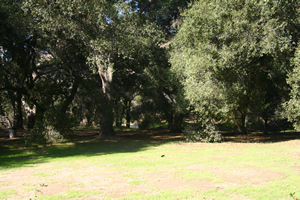
Marker # 8 “Blasting Holes” When railroads were being built, dynamite was used to break up sections of mountain into smaller pieces. Holes were drilled in two rocks found at Marker 8 to provide space for the dynamite.
Marker #10 “Concrete Pool” This pool was the location for underwater scenes in the movies “Robin Hood”, “Jungle Jim” and “African Queen”. Various records indicate that this pool was also called “ Jingle Jim Lake”, “ Robin Hood Lake”, “ Sherwood Lake” and Corriganville Lake”. There is also an underwater camera house to film scenes underwater.
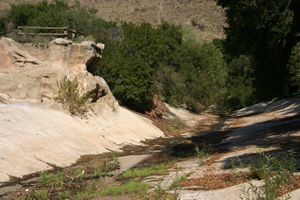
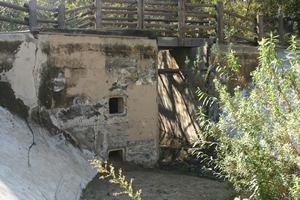
“Stunt Rock” From which Jungle Jim (Johnny Weismuller) would dive.

Marker # 11 “Wildlife Corridor” This marker is off to the south east of the trail and is at the trail head to the Rocky Peak Trail which leads to a tunnel under the 118 Freeway. It was first constructed to connect a previous owner of Corriganville, Bob Hope, to his ranch. Today wildlife use the corridor as a means of transportation from the Santa Susana Mountains to the Simi Hills.
“ Fort Apache” was built in 1947 and used in John Ford’s production of Fort Apache starring John Wayne and Henry Fonda. It was also used in Streets of Laredo 1949; Escape From Fort Bravo 1953; Apache 1954; The Adventures of Rin Tin Tin; Indian Territory; The Gun That Won The West; and Slaughter Trail.
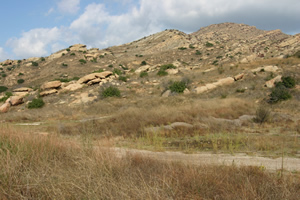
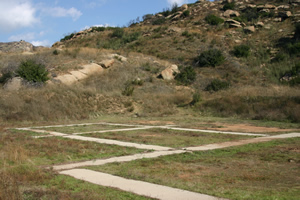
“ Vendetta Village” was begun in 1946 and used in the Howard Hughes production vendetta in 1950 starring Faith Domergue, Hillary Brooke and Nigel Bruce. Ray Corrigan preferred to call it “ Corsican Village”.


Marker # 19 “Stables” During the 1940”s through the 1960’s this location was famous for filming movies. After several fires in the 1970’s the foundation and a few rock walls are all that remain of the famous set.

“ Trail Blazer Cave” the right side was built up with plaster and cement. It was used in the movies: Arizona Whirlwind; Billy the Kid vs. Dracula; The Range Busters; and The Fugitive with David Janssen.
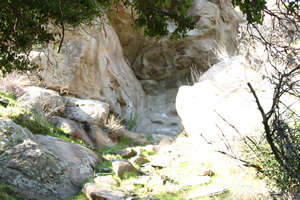
“Canyon Rock” aka “Hideout Rock” is on the north side of “Robin Hood Lake”. It was use in the 1951 movie Jungle Manhunt starring: Johnny Weismuller; Sheila Ryan; Bob Waterfield; Rick Vallin and Lyle Talbot.

ADDITIONAL LINKS:
An Introduction to Corriganville
"Corriganville: Things to See and Do" flyer from 1950s